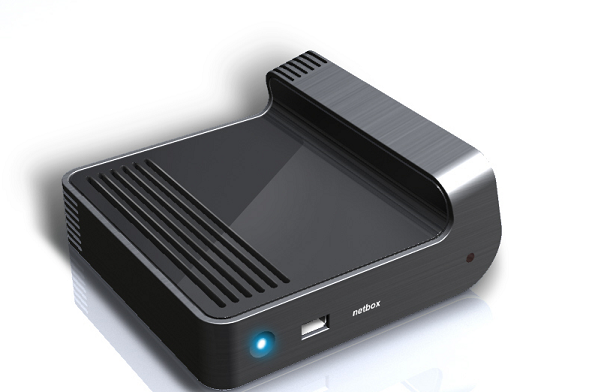Qualcomm MSM722x processors – part of MSM (Mobile Station Modem) series – are mainly used in mobile phones and to a lesser extend in tablets such as WellCoM A800. You won’t find any proper documents or information in Qualcomm website (see Qualcomm MSM page) except the following description: Qualcomm’s Mobile Station Modem™ (MSM™) chipset solutions enable cost-effective mobile handsets with advanced capabilities that leverage 3G technology yet minimize development time. Offered on four discrete platforms for tailored functionality, each chipset is integrated with a select set of features from Qualcomm’s multimedia suite of applications to enrich the user experience while maintaining cost-target objectives. So if you plan on developing on that platform, you’ll need to visit Qualcomm developer website to get most of the information you’ll need. There are two chipsets with similar characteristics. MSM7225 The MSM7225 chipset includes a 528 MHz ARM11 processor with a floating point unit (FPU). […]
WellcoM WePad A800 Android 2.2 Tablet Video Review
More and more decent (e.g. with capacitive multi-touch screen, decent processor…) and cost-effective android tablets are hitting the market such as Archos Gen8 Series. It might be difficult to obtain Archos 70 in some countries in Asia. But not is all lost as product such as the WellcoM WePad A800 are available in Thailand (and probably other countries). This tablet based on Qualcomm MSM7227 @ 600 Mhz runs on Android 2.2. The device comes with 512 MB DDR RAM, 512 MB Rom, a 7″ multi-touch capacitive touch screen (800 x 480) , Wifi, Bluetooth, 2G/3G network support. I discovered this product in a shop in Chiang Mai yesterday. I tried it a bit, it was very smooth and responsive. It sells for 15900 Baht (530 USD / 383 Euros) with a free bluetooth headset. The following videos (In Thai only) reviews the device. The reviewers runs a lot of benchmark […]
Socket Programming: Client crashes when exiting server
One of our digital signage applications was crashing when the control server was shutdown at the same time a command was sent with no apparent reason. It would always crash inside the write function (see code below) and no error message were returned. sent = write(fd, buf, n); After a while, we found that in case the connection with the server is lost, and write tries to access the server, it will generate a SIGPIPE signal and in most systems, the application would just exit by default. A simple way to handle this case was to ignore the pipe signal by adding the following line during initialization: signal(SIGPIPE, SIG_IGN); In case the server is down at the time the write function is called, the signal SIGPIPE would be ignored, write would return -1 and errno should return 32 (Broken pipe). Alternatively, if needs be you could also handle the SIGPIPE […]
Archos 101 Archos 70 with Android 2.2
In the previous blog post about Archos 70 Video Review, I mentioned the device was running on Android 2.2. This is not currently accurate, as the device now ships with Android 2.1, but will be upgradable to Android 2.2 soon after. [ad#Google Adsense – Wide Banner] In the meantime, here’s an another Charbax’s video about Archos Gen8 devices (i.e. Archos 28,Archos 32, Archos 43, Archos 70and Archos 101) running a beta version of Android 2.2 for this series of devices. Jean-Luc Aufranc (CNXSoft)Jean-Luc started CNX Software in 2010 as a part-time endeavor, before quitting his job as a software engineering manager, and starting to write daily news, and reviews full time later in 2011. www.cnx-software.com
Finding a device IP Address
If you are developing software for an Ethernet (or Wifi) device, you’ll need to access the board for debugging and/or testing purpose. If your board does not have user interface or the serial port is not available, you’ll have to find the IP address (assuming it is using DHCP) before accessing the board thru telnet or ssh. A simple way to do that is to ping the broadcast address and check the arp table. > ping -b 192.168.0.255 WARNING: pinging broadcast address PING 192.168.0.255 (192.168.0.255) 56(84) bytes of data. 64 bytes from 192.168.0.246: icmp_seq=0 ttl=64 time=0.018 ms 64 bytes from 192.168.0.101: icmp_seq=0 ttl=64 time=0.217 ms (DUP!) 64 bytes from 192.168.0.246: icmp_seq=1 ttl=64 time=0.023 ms > arp -i eth0 arp -i eth1 Address HWtype HWaddress Flags Mask Iface 192.168.0.103 ether 00:50:FC:00:00:01 C eth1 192.168.0.109 ether 00:13:20:01:01:01 C eth1 If you cannot find your device, it may be configured to […]
Archos 70 Internet Tablet Video Review
Archos as just released a new 7″ Android Tablet. This device costs around 275 USD (249 Euros), which is a pretty good price for a device based on an ARM Cortex A8 at 1 GHz running Android 2.2, a capacitive touch screen (800×480), HDMI output (Up to 720p), built-in wifi (802.11n) and bluetooth 2.1 as well as a front facing camera. Bear in mind that you won’t be able to take pictures or videos with this device since there is no camera on the back of the device. Go to Archos website to get the full technical specs of Archos 70. Here are two videos of the device by Charbax. The first video shows web browser, video playback, google app market place, video playback on TV thru HDMI and facebook. The second video shows the dolphin web browser used with a bluetooth keyboard, video chat with fring (still have some […]
How to check open files for a process
While debugging your program, you may encounter the message “Too many open files”. One way to fix the issue could be to review your code and check open, fopen, socket and pipe calls are matched with close and fclose calls, but with large projects this may be cumbersome. A better way is to list the open files using the proc filesystem. I’ll use VirtualBox program as an example since this is running in our server. First, locate the process ID (PID): pgrep VirtualBox 3901 3950 Then list the file descriptor opened for process 3901 sudo ls -l /proc/3901/fd total 0 lrwx—— 1 root root 64 2010-10-05 14:52 0 -> /dev/pts/1 lrwx—— 1 root root 64 2010-10-05 14:52 1 -> /dev/pts/1 lr-x—— 1 root root 64 2010-10-05 14:52 10 -> pipe:[15825] l-wx—— 1 root root 64 2010-10-05 14:52 11 -> pipe:[15825] lr-x—— 1 root root 64 2010-10-05 14:52 12 -> pipe:[15829] […]
Netgem Set-top-box N5000 – Toshiba Places
Mid-september, Netgem showcased their new set-top box at IBC 2010: the Netbox N5000 Internet/TV Adaptor. A modified version of this Set-top box will be used by Toshiba (Toshiba places) and be available for purchase for 99 Euros starting in October 2010 in France and later in 2011 in some other Europeans countries. [ad#Google Adsense – Wide Banner] First let’s have a look at the casing (Not the one used by Toshiba places). The front panel has the Power LED, a USB port and the remote sensor. They’ll either provide Infrared or RF remotes depending on the end customer requirements. The back of the set-top box features TV In/Out, Digital Audio (S/PDIF) output, HDMI output, an Ethernet port and the power jack (+12V). Their product brief also mentions a USB port on the rear as an option and Wifi support (802.11n). The Netbox N5000 hardware is based on Sigma Designs SMP8655 […]






